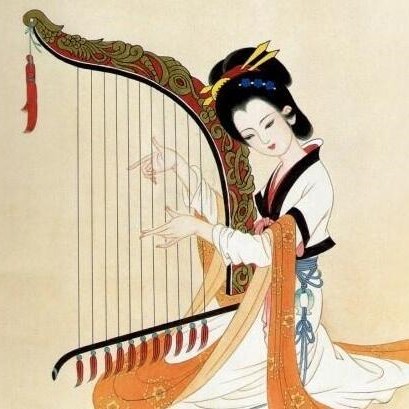Konghou overview
 Konghou (pinyin: kōnghóu) Konghou (also known as Konghou or Kanhou) is an ancient Chinese traditional stringed musical instrument, which originated in the Han Dynasty, but fell out of fashion after the 14th century and gradually disappeared.
Konghou (pinyin: kōnghóu) Konghou (also known as Konghou or Kanhou) is an ancient Chinese traditional stringed musical instrument, which originated in the Han Dynasty, but fell out of fashion after the 14th century and gradually disappeared.In addition to the use of court music in ancient times, it was also widely spread among the people. It is now commonly used for solo, ensemble and singing and dancing accompaniment, and is used in large national orchestras.
In ancient times, there were three types of konghou, namely, the lying konghou, the vertical konghou, and the phoenix-headed konghou. According to research, Konghou has a history of more than 2,000 years.
In addition to being used by court bands in ancient times, Konghou was also widely spread among the people.
During the prosperous Tang Dynasty (618-907) period in China, with the rapid development of economy and culture, the art of performing Konghou also reached a very high level. That is to say, during this period, the ancient Chinese Konghou was introduced to Japan, Korea and other neighboring countries successively. In the monastery of Todaiji Temple in Nara, Japan, two remnants of the Tang Dynasty Konghou are still preserved. However, this ancient musical instrument fell out of fashion in the late fourteenth century and gradually disappeared, and people can only see some Konghou patterns on the previous frescoes and reliefs.
- Chinese name:Konghou
- alias:Can Hou, Kong Hou
- Pinyin:kōnghóu
- Types of:plucked instruments
overview of other similar instruments
- sanyanxiao overview
- Daguangxian overview
- Leiqin overview
- hahao overview
- yandundagu overview
- Han Xiaozheng overview
- Fang Xiang overview
- guanzi overview
- zhuqin (Dao Qin) overview
- zhuiqin overview
- bangzi overview
- three-stringed piano overview
- Gehu overview
- xiao overview
- xiaokonghou overview
- Konghou overview
- Sheng overview
- suona overview
- hulusi overview
- gushao overview
 渝公网安备 50010702504639号
渝公网安备 50010702504639号